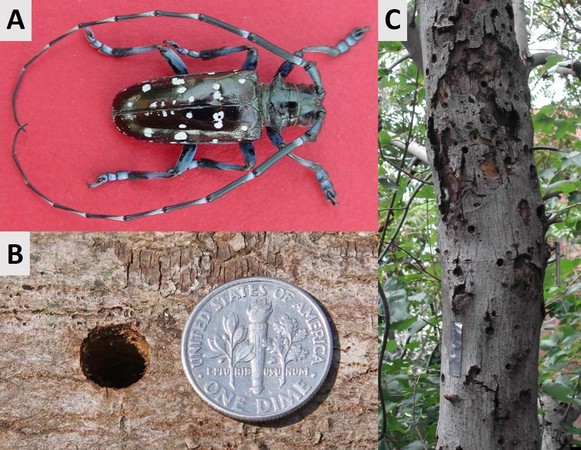
The Asian longhorned beetle—called ALB for short—is an invasive wood-boring insect that can feed on over 20 different species of trees commonly found in Missouri. This beetle has the potential to destroy millions of acres of trees in the US, decimating both rural and community forests.
The best time to look for signs of this destructive species is during late summer. The beetle’s preferred host is red maple, but many other trees are attacked by ALB, including boxelder, buckeye, willow, elm, ash, birch, sycamore, mimosa, mountain ash, golden raintree, and most maple species.
Help protect your local forest from the devastating effects of ALB by participating in Tree Check Month. Take an evening stroll through your yard or neighborhood, keeping an eye out for the large, showy beetle and the damage it causes to trees.
ALB is easy to recognize:
Beetles are 1 to 1? inches long.
They have black, shiny bodies with distinct white spots.
Antennae are long with black and white stripes.
Tree signs and symptoms of an ALB infestation include:
Large, round exit holes
Fine wood shavings collecting around the trunk or on branches
Leaves on some branches showing fall colors early
Report suspect beetles and infested trees, including photos, to MDC’s Forest Health staff at forest.health@mdc.mo.gov or visit https://short.mdc.mo.gov/ZBh.
Learn more about the Asian longhorned beetle by visiting this USDA website: https://www.aphis.usda.gov/aphis/resources/pests-diseases/asian-longhorned-beetle.